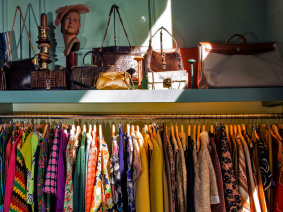Thehistory of Paris Fashion Week is a breathtaking saga, woven by fashion masters who have left an indelible mark on the world of haute couture.
The early days of Parisian fashion, at the turn of the 20th century, were marked by daring couturiers such as Charles Worth and Paul Poiret, eager to present their creations in motion. Paul Poiret organized sumptuous balls, where guests competed in elegant outfits, the most legendary of which was the 1911 "Mille et Deuxième Nuit", which unveiled lampshade dresses and sarouels. It was a major event, marking the beginnings of fashion presentations.
The 1920s and 1930s saw the emergence of talents such as Coco Chanel, Elsa Schiaparelli and Madeleine Vionnet. During this period, fashion shows evolved from large-scale parties to intimate, exclusive presentations reserved for customers. These events were organized in the most secret of circles, with no room for photographers.
A few years later, in 1945, post-World War II regulations, initiated by the Chambre Syndicale de la Haute Couture, required couture houses to present at least 35 outfits per season. While the fashion industry across the Atlantic was in a state of flux, an iconic couturier appeared on the Paris scene: Christian Dior. In 1947, he revolutionized fashion with his"New Look", redefining lines and femininity, as did other great names of the time such as Jacques Fath, Hubert de Givenchy and Pierre Balmain.
In the 1960s, the advent ofYves Saint Laurent marked a transition to ready-to-wear and a renewed focus on youth and youth culture. Ready-to-wear was born.
In 1973, the Fédération Française de la Couture was created at the same time as the first official Paris Fashion Week, inaugurated by the memorable"Battle of Versailles" show. This show pitted French and American styles against each other, with the aim of raising funds for the restoration of the Château de Versailles. The rules of the game had changed, and the competition was well and truly underway.
The decades that followed were marked by daring fashion shows and iconic creations, from Jean Paul Gaultier to Thierry Mugler, via Karl Lagerfeld as artistic director of Chanel. The 1990s saw the arrival of British designers such as John Galliano at Dior and Alexander McQueen at Givenchy.
Today, the Paris fashion shows are ever more grandiose spectacles. With sets and stagings of unbridled creativity, Paris confirms its undisputed status as a fashion capital with every show.
Practical info :
Traditionally, brands unveil their ready-to-wear collections 6 months before they go on sale, giving them time to organize production of the pieces presented. For example
- for Men: Autumn/Winter in January and Spring/Summer in June
- for Women: Autumn/Winter in February, early March and Spring/Summer in September, October
- for Haute Couture (no production deadlines): Spring/Summer in January and Autumn/Winter in July















